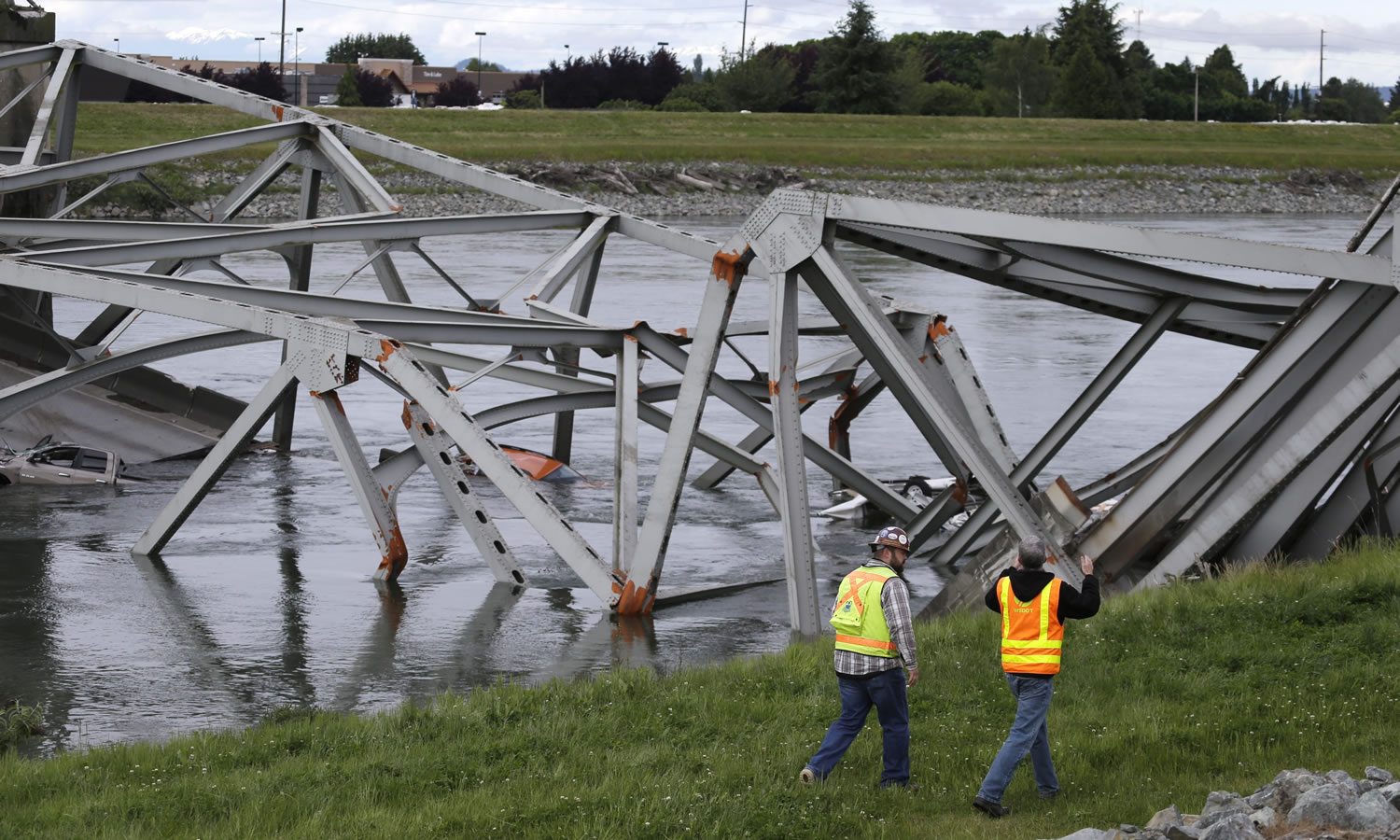One year after one of Washington’s busiest freeway bridges was taken out by a truck carrying an oversized load, the state Transportation Department is struggling to find money to create a system that would better publicize height limitations of bridges.
The goal is to create an interactive online map of the state’s nearly 3,100 bridges that haulers could use to plan their routes. By clicking on a bridge, they would see clearances for each lane.
But there’s no money dedicated for the project and it’s proceeding slowly, agency officials say.
“We’ve started working on it, but it’s not funded so we have to get the money out of something else,” said Chris Keegan, a Transportation Department operations engineer who oversees bridge preservation and maintenance in the department’s Olympic Region. “It’s a very slow process.”
A Canadian truck driver carrying a high load of drilling equipment hit the Interstate 5 bridge over the Skagit River last year on May 23. The strike took out a section of the steel-truss bridge, which carried northbound and southbound traffic.
No one was killed or seriously injured in the accident, but three people in vehicles fell with the bridge to the river. The bridge carried about 71,000 vehicles a day on the state’s primary north-south route.
The Transportation Department completed installation of two temporary spans over the Skagit and reopened I-5 to traffic in June. A new, permanent span opened Sept. 15, paid for with $8.5 million in Federal Emergency Relief Funds.
Keegan said the first step in creating an online bridge map is updating all clearance measurements to make sure they are accurate.
“Some of them haven’t been updated in 20 years,” he said. “Until we get a good handle on the clearances, we can’t do the map.”
Keegan said that in the Olympic Region, crews are concentrating on I-5 bridges first.
“They’re part way through with those,” he said. “Once they get the Interstate done, then we’ll try to roll out that part of the map.”
For decades, the Transportation Department published bridge clearances in a printed booklet. The information now is on line, but it’s in a 433-page PDF file that’s awkward to use.
The available data have minimum and maximum clearances, but do not spell out clearances for individual lanes.
“As a trucker, it’s important to know the clearance over each lane,” said Transportation Department spokeswoman Claudia Bingham Baker. “A lot of overpasses have different vertical clearances from one lane to another.”
Clearance on the Skagit River bridge was 18 feet at its center, but because of its curved girder design, the clearance was only about 15 feet 6 inches at the fog line.
Drivers with oversize loads were supposed to take the center lanes, but the driver whose rig struck the bridge was in the right lane and moved even farther to the right, he told federal investigators, because he felt crowded by another large truck passing him in the left lane. His load measured 15 feet 9 inches in height.
In addition to creating an interactive map, Transportation Department regions around the state have been adding signs to bridges, Keegan said.
The vertical clearance on the Skagit River bridge wasn’t marked, but the Transportation Department was not required to do so. According to the state’s administrative code, vertical clearances don’t have to be marked unless they’re less than 15 feet 3 inches.
In the Olympic Region, the new signs are already up, Keegan said, even though that also was an unfunded project.
“Aluminum signs aren’t cheap,” he said. “The material alone was about $14,000.”
In January, state Rep. Jim Moeller, D-Vancouver, introduced a bill that would have increased haulers’ fees to establish a $500,000 fund to maintain an automated database of the state’s bridges, including vertical clearances. Permits for oversize loads would have to be run through the system before being granted.
The bill died in committee.



